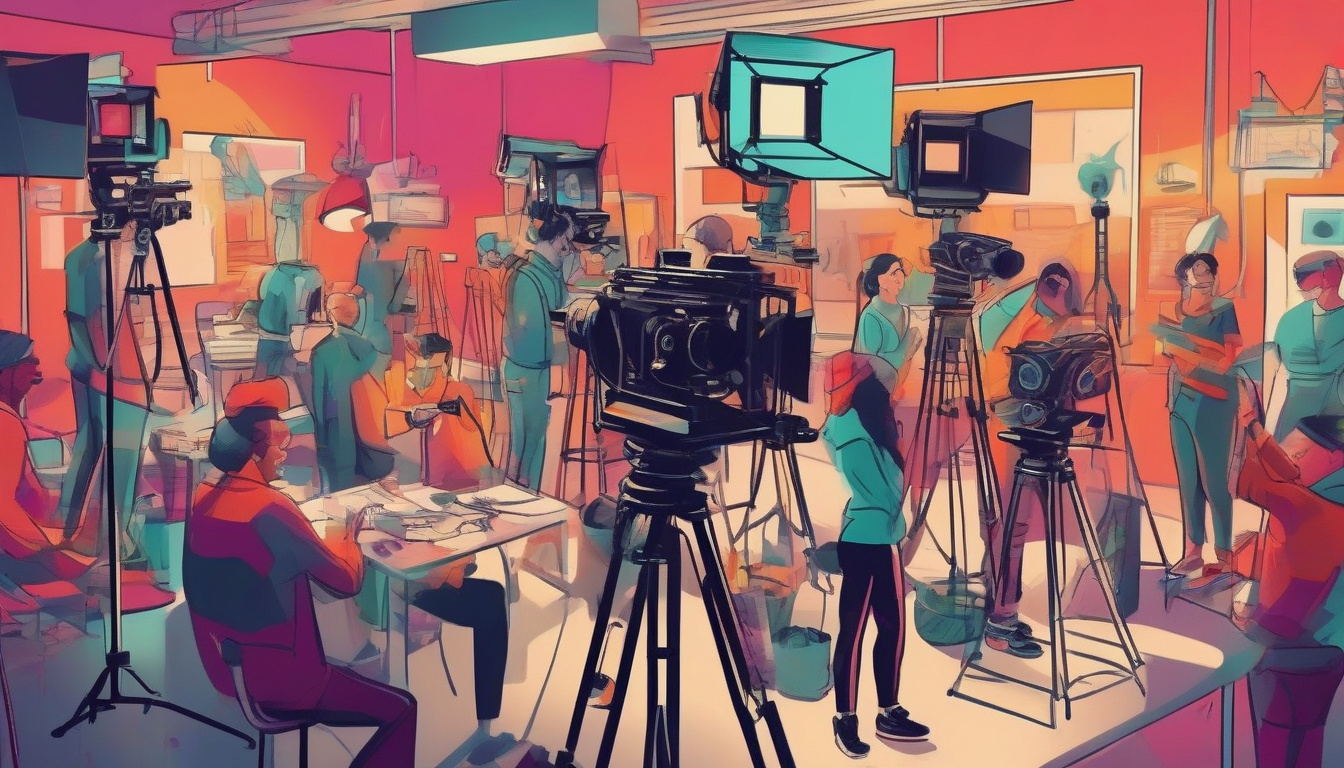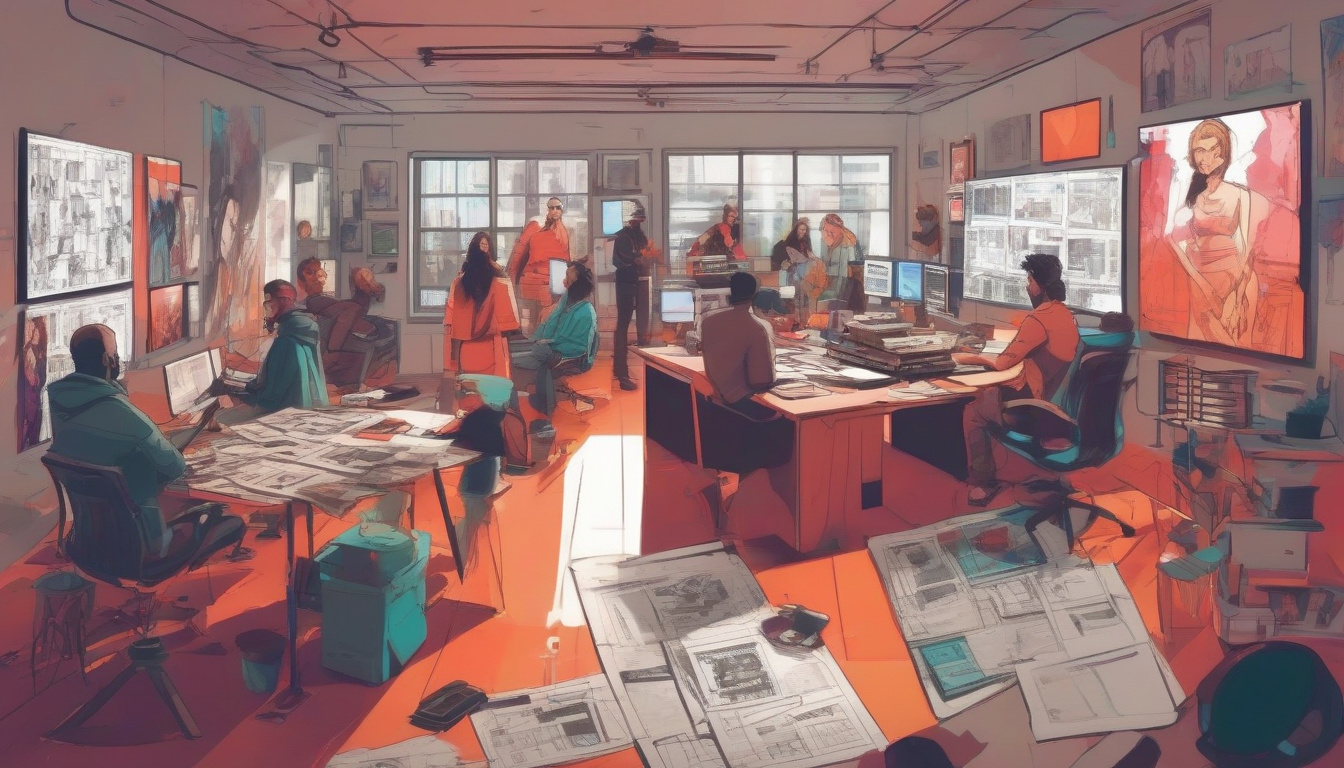
Welcome to the Fantastical Forge: Where Inspiration Becomes Legendary
Ever had a flicker of inspiration that felt like it could be the next big blockbuster or a novel that ends up dog-eared on bookshelves across the globe? Of course, you have! Your brain is a non-stop idea machine—congratulations on being brilliant. But the gap between Hey, that’s a cool idea and writing The End on a manuscript festooned with confetti can seem as vast as the Grand Canyon. Fear not! Strap in as we dive into the nitty-gritty of turning your spark of inspiration into a full-fledged story.
Step 1: Capturing the Wild Idea
The first step is to catch that fleeting idea before it evaporates into the ether. Whether it’s a dream about a talking dog who’s secretly running for president or the whisper of a plot during a particularly boring commute, snag it! Keep a journal, use a voice memo app, or scribble on napkins—whatever it takes. This archive of randomness will be your gold mine.
Pro Tip: Go Digital, Go Wild
If you’re not the pen-and-paper kind, digital tools might just be your new best friends. Apps like Evernote or Google Keep can capture your ideas the moment they strike. Plus, they’re virtually impossible to accidentally wash in your jeans pocket.
Step 2: The Art of the Marination Process
Got your idea? Great! Now, let it marinate. Yes, like a fine steak. Give your idea some time to sizzle in the creative juices of your mind. During this period, consider the different angles, perspectives, and trajectories your story could take. This is when your idea starts taking on a life of its own, sprouting little idea-let children all over the place.
Fuel the Fire with What If Questions
Nothing stretches an idea like good old What if questions. What if your talking dog president was actually a spy? What if he wasn’t the only animal in power? What if this all happens in a world where humans never existed? See? Endless possibilities!
Step 3: Building Your World Brick by Brick
With a robust idea and a castle of What ifs, you’re ready to lay down the laws of the land. World-building, dear creator, is where you get to play god. Are you setting your story in a dystopian future with flying cars and mood-altering eyeglasses? Or is it set in a magical realm where rivers flow with chocolate and mountains belch marshmallows on Mondays? Decide the physics of your universe and understand its societies, its conflicts, and its rules.
The Devil is in the Details
When building your world, think about the small stuff. What do people eat? How do they dress? What’s taboo? These details enrich your world and give depth to your narrative. They also prevent later plot holes (like forgetting to mention that cars can fly until the very moment a character needs an escape route).
Step 4: Chuck in Some Characters
What’s a world without its inhabitants? You need characters to push the plot along. Introduce a protagonist with charming quirks, a mysterious backstory, or an impossible goal. Sprinkle in a few allies with their own tales, maybe a love interest with eyes as enchanting as a supernova, then add a dash of nefarious villains to taste. Voila! You have your cast.
Remember: Conflict is Key
Every character must want something, and there better be staggering odds against them getting it. This is the essence of conflict, and conflict is the engine of your story. No conflict, no story. Unless, of course, your tale is about paint drying. Even then, can paint experience existential dread? Think about it.
Step 5: Plotting Your Way to Victory (or Tearful Redemption)
Now, take your characters, your world, and all the twisted situations from your What ifs, and start plotting. Whether you’re a meticulous planner who needs every twist charted or a free-spirited pantser who writes by the seat of their pants, a rough outline can help keep you on track. Think about the major events and how they escalate the tension till the climax.
The Great Balancing Act
While plotting, balance is key. Dispense your revelations and character developments evenly across chapters. Avoid dumping all the secrets in chapter one—not cool. And please, for the love of literature, ensure your resolutions feel earned. Deus Ex Machina is so last millennium.
Step 6: Drafting, Rewriting, and Battling the Dragon of Self-Doubt
With all the elements in place, start writing your first draft. Embrace the mess. Let characters run amok and plots thicken like poorly stirred gravy. You can—and will—clean up later in revisions. When self-doubt creeps in, arm yourself with the sword of perseverance and the shield of stubborn optimism. You’ve got this!
Edit with Merciless Precision
Once your draft is done, the real fun begins: editing. Cut redundantly, reshape dialogue, sand down your prose until it’s smoother than a jazz solo. Get feedback from trusted readers, make necessary sacrifices to the gods of grammar, and prepare for battle anew—this time with agents and publishers.
Ready to turn that spark of an idea into a blazing beacon of story? Remember, every epic tale began somewhere—with a single, zany spark. Now, go forth and set the literary world on fire! Just, you know, in a metaphorical sense. Actual fire is generally frowned upon in most writing circles.






